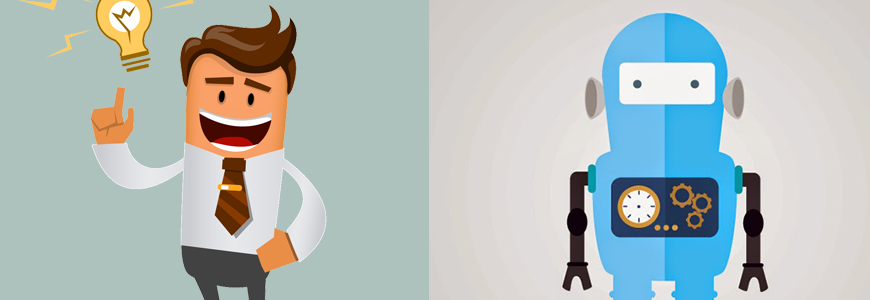
There was a time not too long ago when machine language translator services would never have been used by anyone other than to translate a snippet of a comment or a social media post. But now, many websites have basic built-in translation tools. So if you need a translator French English provider, do you go with a machine translator or a human translator? Which one is the best?
Well, let’s establish the advantages and disadvantages of machine translation. For those who are in need of a fast turnaround, machine translators are far superior to humans. There’s the ability for a document to be translated into multiple languages almost instantly. This is very helpful for multinational businesses that are looking to launch any copy or advertising content in multiple countries at the same time. However, machine translation also comes loaded with some very obvious problems. Because it is being translated automatically using dictionary databases rather than human intuition, there’s a chance for mistakes to be made or colloquialisms to be misunderstood and misconstrued. This can happen a lot in, for example, English to French translation or during French translation to English. It is worth remembering that machines just cannot translate context very well at this moment in time. This would require a level of artificial intelligence that is not available. With that being said, machine translations can be dramatically improved by Post-editing Machine Translation (PEMT). This sees a machine translation edited after-the-fact by a human translator. This ensures that any odd turns of phrase or incorrect words from the machine translation can be corrected before public or private release.
So machine translation is definitely worthwhile as long as it is checked by a human who is completely fluent in the target language(s). But, undoubtedly, the best quality of translation comes from having a human translate documents. This is due to context being understood. At the same time, this is dependent on the translators understanding the target language. Take, for example, French English translations. If the French English translators involved are not translating into their mother tongue (i.e. native tongue), then they may not be able to adequately translate any quirks, colloquialisms or slang in the original wording. So human translation is only better if the translation is performed by a professional translator. Unlike machines, human translators can also offer alternatives when certain phrases just aren’t working. Machines cannot compete with this level of scrutiny; nor can even PEMT. Despite how beneficial PEMT can be, an editor is likely to be looking at a machine translated document to ensure that it is readable. That does not mean that the translation will definitively be of a high-quality, just passable. So, as you can see, there are definite advantages and disadvantages to both PEMT and human translation.
As such, we can’t really tell you what is best. It all depends on your situation. If you need, say, a French to English translation fast, then perhaps you should consider PEMT services. However, if you need a translation of impeccable quality, then you should consider an actual human translator French English service.

